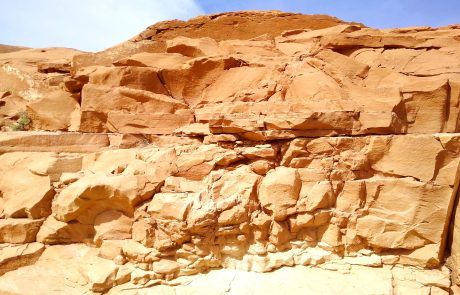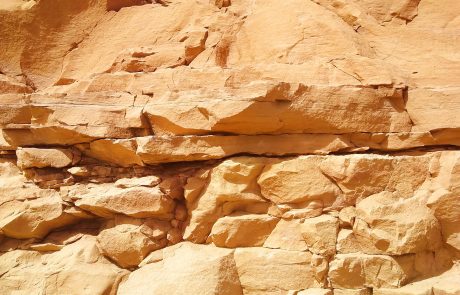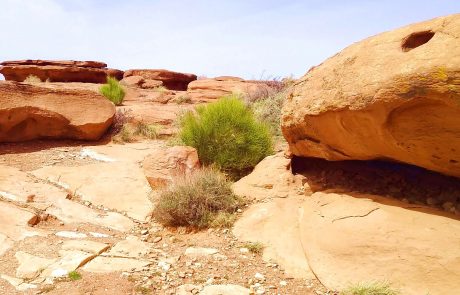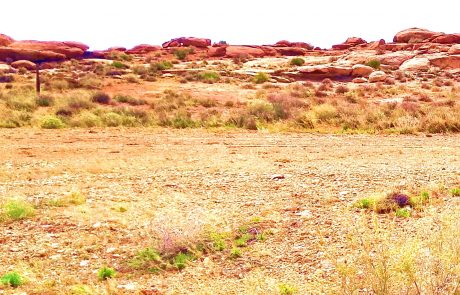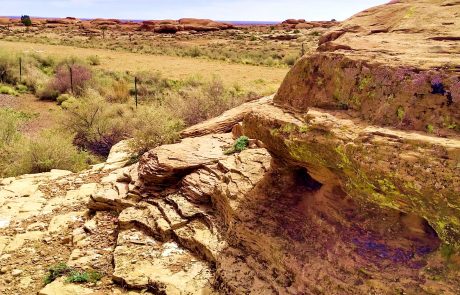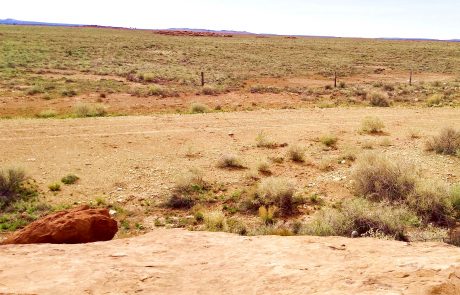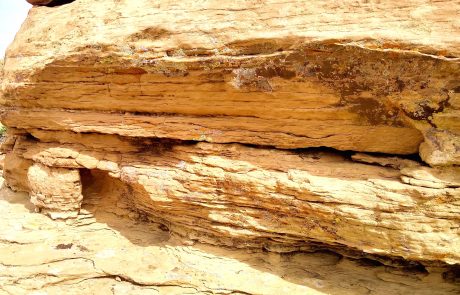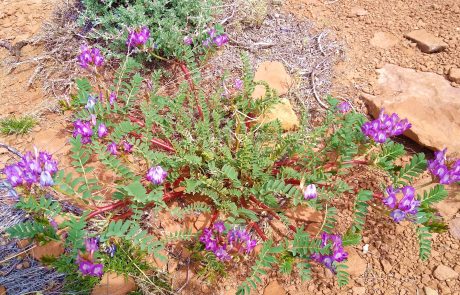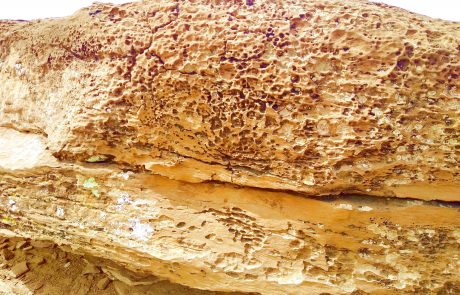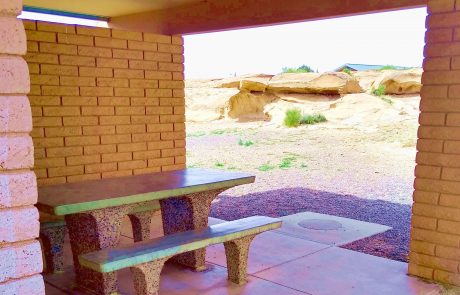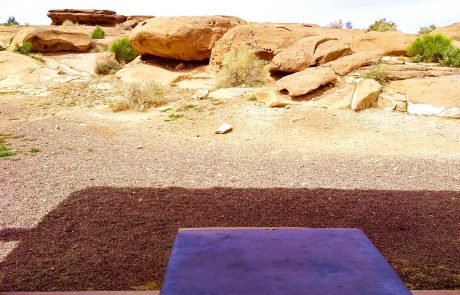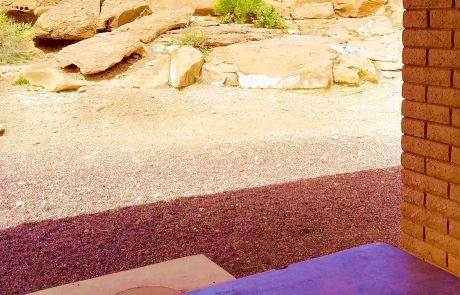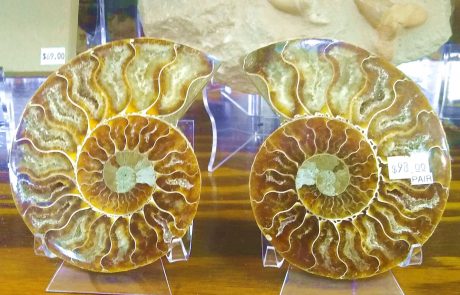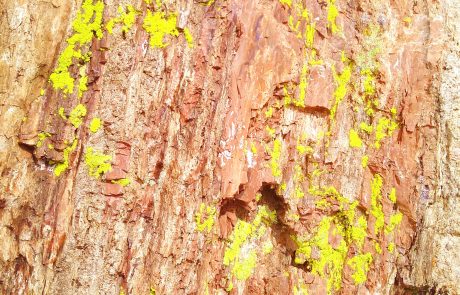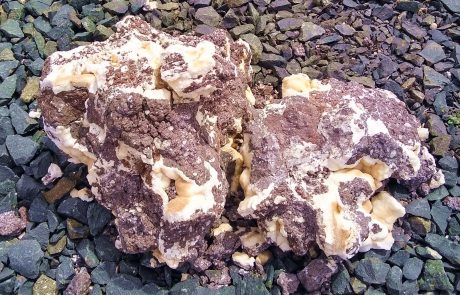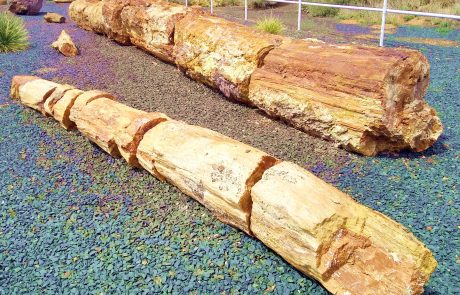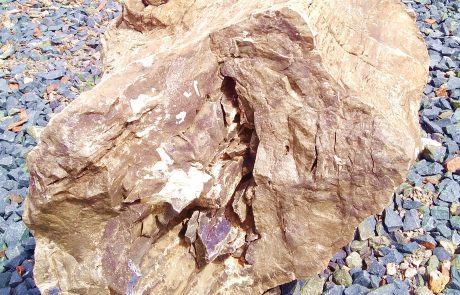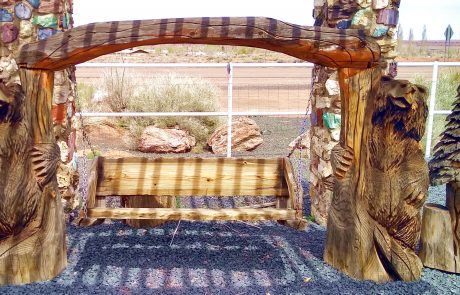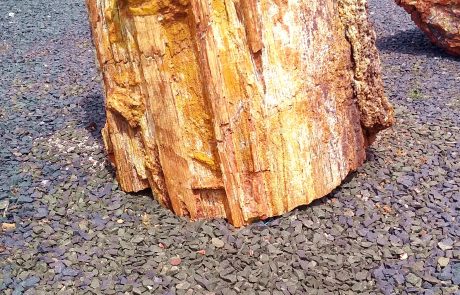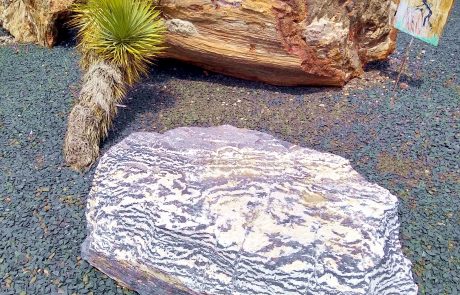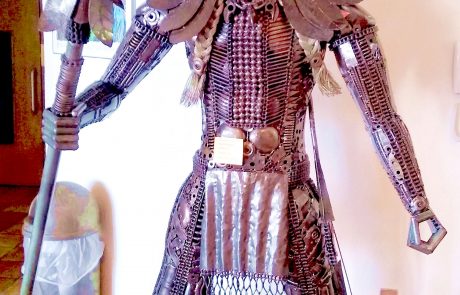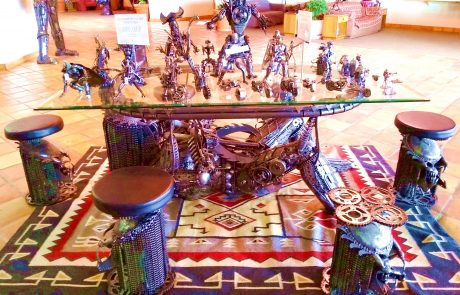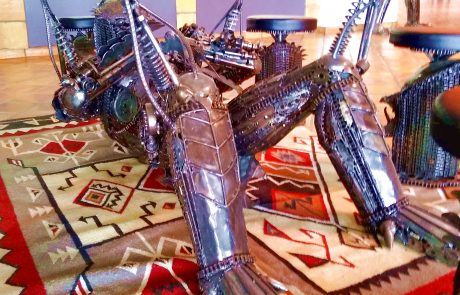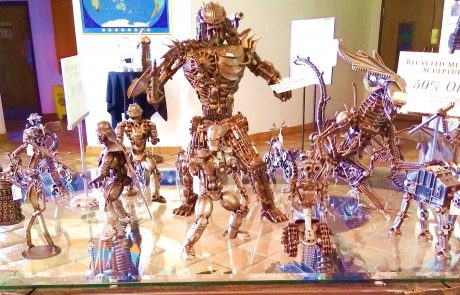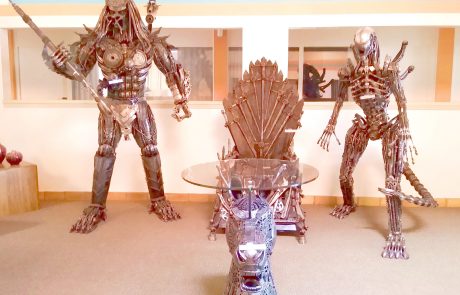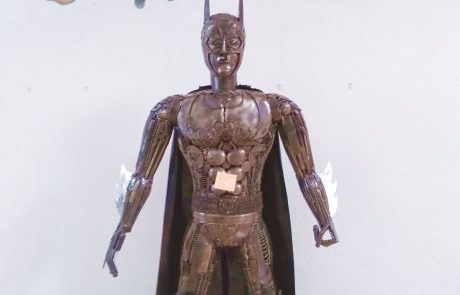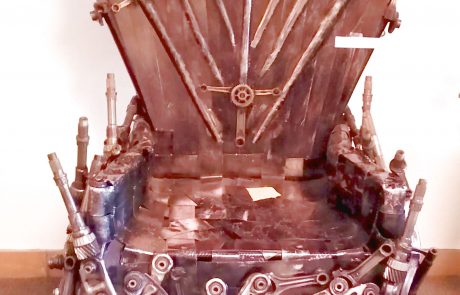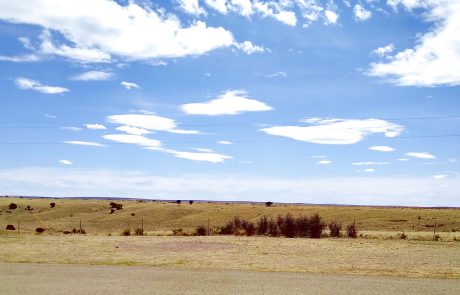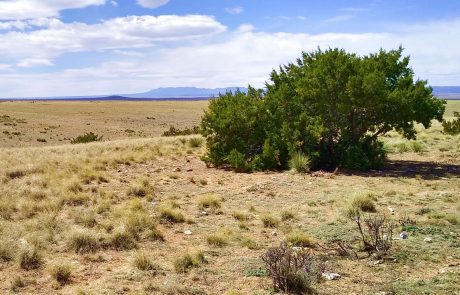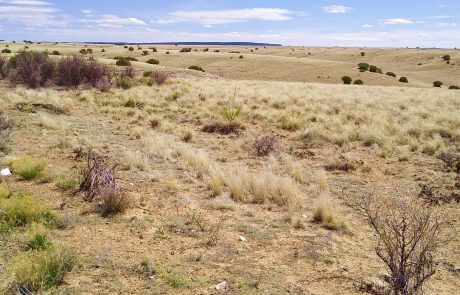April 2020
 When the going gets tough, the tough hit the interstate. After my exercise in agenda flexibility in California’s Central Valley I decided it was time to shorten the trip across the country and make a beeline for the hardwood forests of the East. Where’s that transporter when you need it? Scotty, WTF??
When the going gets tough, the tough hit the interstate. After my exercise in agenda flexibility in California’s Central Valley I decided it was time to shorten the trip across the country and make a beeline for the hardwood forests of the East. Where’s that transporter when you need it? Scotty, WTF??
Since only one option remained I hit the road. Having modified my itinerary to make the drives longer but not crippling, I set out from California bound for Arizona. It dawned on me after getting one cancellation from a place I had booked in Flagstaff that the wise course of action would be to book places in smaller burgs. That’s exactly what I did and thus ended up staying in places you’ll likely never have heard of — but don’t feel alone. I had never heard of them, either. But it worked a treat and the approach recommends itself generally, not just for times of national emergency. It’s lovely to overnight in a place that’s quiet and closer to the natural world.
The drives were all about landscape for me, of course — how could it be otherwise? When you’re on the interstate driving along at 70MPH you’re something of a captive audience for the geological splendors on display. But my attention was devoted intentionally and especially to what came along in the way of scenery. I was duly impressed by the stretch through the tail end of the Sierras east of Bakersfield. I was thrilled by the mountain scenery of western Arizona, especially as I neared my destination of Williams, AZ, which sits in the middle of a Ponderosa pine forest at an altitude of 6,800 feet. The place where I stayed happened to be on the east end of town and had a picnic area smack dab among the pines, which was a great treat. I’d certainly not have had that amenity in downtown Flagstaff. It’s true that it froze during the night, but hey, at the end of March at an elevation of 6,800 feet that’s kind of like turning on a tap and having water come out. In other words: duuh.
But no matter, when morning came I fired up the Asian Buick and hit the road. Humphrey’s Peak (the highest natural point in Arizona at 12,633 feet) had wowed me the day before with its impressive contour jutting up from multiple vantage points along I-40. I decided to stop in Flagstaff to gas up in hope of getting a good view of it. And the travel gods smiled upon me:
Looks like it must have frozen overnight up there at the top, too, LOL. Such a lovely mountain, I wanted to gawk at it a good while but I dared not tarry since I had miles to go before I checked into the next hotel to resume my life of leisure. So back onto I-40 it was and up to cruising speed.
The Federal Government in its wisdom had decreed that the dangers of coronavirus required closing all national parks, so my plans to visit the Petrified Forest National Park about two hours east of Flagstaff bit the dust. Before you come to that park, however, you cross the path of Meteor Crater park. I didn’t even look it up to see if it was open or not because by that point I no longer cared. So I cruised on past the turning for it but discovered with great delight that a rest area bearing the brand name is sited nearby. In I pulled for a spot of recreation and a chance to stretch my legs.
When you think about it apart from all the hype, Meteor Crater is just a hole in the ground. Right? A bloody hole in the ground, period end of story. So I took the opportunity to use the rest area as my alternative park. Rest areas are usually sited in interesting and pleasant places, so I looked to find the particular charms of Meteor Crater Rest Area. It turned out to be a charmer and highly educational to boot. Allow me to explain.
We think in terms of political boundaries — states and counties, for example. Nature, however, eschews such things and operates with entirely different units often called geologic provinces. It occurred to me as soon as I got out of the car at Meteor Crater Rest Area that I had left one geologic province and entered another. The one I had left just outside Flagstaff was a province of granite. At Meteor Crater Rest Area I stood in a province of sandstone. They are two entirely different beasts that yield two entirely different types of topography and landscape. That fact seemed obvious to me after I thought about it — you can’t get a mountain like Humphrey’s Peak using sandstone. No can do. And you don’t get mesas using granite — granite don’t play that. So within the state of Arizona there are completely different countries, geologically as different each from the other as India is culturally from Italy. I tried to find an image that captured the difference, with both provinces visible. Here’s what I came up with:

Snow-clad (granite) peaks in the blue distance are all very well, but I stood now in the sandstone province and there was plenty to inspect. The rest area sits in a region of stone outcroppings that have weathered into odd shapes resembling curds before they get pressed into a cheese form. As soon as I walked near the outcrop just behind the rest area I knew what my focus should be: TEXTURE. Sandstone responds to weather like plants respond to light, albeit at a considerably slower pace. So I submit for your consideration studies in form and texture, all taken from the rest area. Who needs national parks, anyway? Nature is all around us and ALL of it is interesting.
If like mine your thoughts turn to the geological underpinnings of things as you wander then you might ask as did I what weather has left so many different traces on the rocks. There is so large a variety of patterns visible — honeycombs, holes seemingly bored by a large drill, lips left hanging in mid-air because something has eaten away the stone beneath them, and many more. How can all these different effects come from the same weather that must have visited the entire region at the same time, with the same force? As I walked about and peered at the formations it seemed I was looking at a village with every villager having a different report on the meteorological events and their effects. What a fantastic introduction to the sandstone province I had entered. The outcrop at the Meteor Park Rest Area tipped me off about what to look for as I drove across the landscape and urged me to take my delight in the horizontality of stone rather than in its verticality as was the case in the granite province I had just left.
Since I was in the area during the short time that wildflowers bloom I was treated to the sight of the handsome specimen you see in the next to last pic. The leaf and flower show that it’s a kind of vetch, in the pea family (Fabaceae), but it’s not the same vetch species we have in my neck of the woods. But a rose by any other name etc. etc. There was a particularly handsome display of it I’ll hold in mind now whenever I think of the place:
Sagebrush rules the roost, of course. We have sagebrush regions up in the Bitter North, too, so I’m familiar with the beast — Artemisia tridentata, which believe it or not is in the daisy family (Asteraceae). As I surveyed the landscape and saw the profusion of sagebrush I was induced to consider — and appreciate in earnest for the first time — its genius for adapting to the environment and thriving in it so well when most plants would go into a faint from which no type of smelling salts would revive them. Compared to the vetch with its lovely flowers and delicate, filigree leaves it strikes a completely different aesthetic bargain, that much must be admitted, but there is great beauty in utility and we all admire people who prove themselves both tough and clever at the same time. Those qualities cannot be gainsaid for our friend Artemisia tridentata. So I came at long last into the properly respectful frame of mind toward it — it’s a clever thing and does its job extremely well. Hats off.
I found one more wildflower as I wandered over the rocks — just one. Several plants of vetch were in bloom, as the pics show, but only one specimen of this beauty, the name of which I know not:
But I was odd man out in what I was doing at the rest area. Since the next rest area was 128 miles down the road a large number of long-haul truckers had stopped in to take advantage of the opportunity for a pause that refreshes. The conjunction of commerce on display reminded me forcefully that all those things we order on Amazon don’t get delivered by Harry Potter’s owl Hedwig, somebody has to get them from Point A to our particular Point B without the use of magical powers. Here before me was the 18-wheel proof of that pudding. Likewise, anybody who’s lived in the South as I have will produce a smile of recognition when they see the words “Little Debbie.” It’s the Southern answer to Hostess. And let me tell you, baby doll, if y’all fix yourself up with some Little Debbie Swiss Rolls you’ll never touch a Twinkie again. No siree. What Little Debbie was doing in Arizona I can’t begin to imagine. I had no idea she ever crossed the Mason-Dixon Line, let alone the Continental Divide. The girl gets around, obviously, but I wonder if her momma knows …
Before we leave I want to give another shout-out to the Highway Commission for their excellent facilities. There was actually toilet paper in the loos, I’ll have you know. Just try finding any at WalMart or Costco these days — no can do. Where Uncle Sam gets all the loo paper I have no idea, but he’s the man with the plan (and the rolls). Kudos to the max. Given that the temperature in this part of Arizona for much of the year is hot enough to fry eggs on the pavement the picnic tables have been gracefully enclosed in handsome brick casitas with lovely views out to the sandstone. Here are a few pics:
The Petrified Forest National Park was closed, as I mentioned, but the massive billboards announcing petrified wood at Holbrook, AZ prompted me to exit and have a look. After driving around a bit I came across the mother lode and here it is:

Just because the park was closed didn’t mean I had to forego my encounter with petrified wood — Jim Gray saw to that, thank you very much. From a look at the stock he has on site he may well have half the contents of the park at his shop. The display is amazing, outside as well as inside. I did tour the inside and it’s worth a tourist’s time to gander, but the outside was what really impressed me. Here are the pics:
But don’t think that’s all that Jim has on hand — far from it. Here’s a pic of just one portion of the grounds around the building:

And perish the thought that we should limit ourself to the paleobotanical, there’s the paleozoological to cover as well, and Jim is well up to the task:
I did see Wild Bill in the shop, by the way — I’m no paleozoologist, but he looks a bit dodgy to my eye … I can easily imagine that he was fished out of the Everglades, boiled down to the bones and posed with his jaws agape to impress unsuspecting tourists. But that’s just me … How quaint we Americans are, with our love of the Barnum and Bailey approach to things. It makes us so amusing. As the mother of an English friend of mine once said to me, “Americans are so clever with their hands.” Jim’s shop puts the exclamation point on that assessment of things, don’t you find?
From thence I passed eventually into New Mexico and had only a short way to go before reaching my destination: Gallup. I chose it because it was NOT Albuquerque and I wanted an easy get from Williams, AZ. Mission accomplished. I thought there would be a lack of points of interest in Gallup since the landscape isn’t anything to write home about but I was wrong. Right there in the lobby of the Howard Johnson was a large display of metal sculpture that should have required an admission charge. Before I left the next morning I went around and took pics. I don’t even know the sculptor’s name, but obviously he or she (he most likely given that the images are guy stuff incarnate) has talent that won’t quit. Putting a reclining Terminator as the pedestal for a dining table is an act of special imagination. The fact that all these fantastic forms are made from recycled metal pieces only adds to the interest IMHO. So here’s the gallery. Those of you in the know about Dungeons and Dragons or Game of Thrones may recognize things I don’t — it looks to me like somebody’s been watching a lot of Transformer movies. Here are the pics:
Since I had the entirety of NM to cross before I reached my destination in Amarillo, TX once the metal sculpture viewing ended I hit the road with the intention to drive as steadily as I could. New Mexico supported the agenda by having very few rest areas. I only stopped at one, which presented an admonishment I’ve never met with before at a rest area on an interstate highway:
Welcome to New Mexico, Land of Enchantment. 🙂 The place was so bare I’d have had no difficulty seeing a snake on the ground so my anxiety level remained low, but all the same, I’ve never had that warning come my way before. Would there had been a warning sign about chiggers at that rest area in Kansas I stopped at years ago …
Drive I did, unrelentingly. The landscape I passed made me believe that the state motto of New Mexico should be, “The Empty Country.” Interstate 40 crosses it like an aorta of settlement and commerce while from its narrow band spread in all directions emptiness and a strong intimation of inhospitality to the human animal. There’s a glimpse of red rock country to the north as you drive from Gallup heading toward Albuquerque and I was duly impressed. Thoughts of slot canyons and Native American cave dwellings came to mind, but as I looked south I saw only vast emptiness. When I finally came to a rest area the red rock had given out and the emptiness alone remained.
But even in the scablands it’s Spring and both the site plantings and the wildflowers contributed their bit to the renewal of life. I shuddered to think what state they’d occupy in July or August so limited my thoughts to the moment and felt duly grateful to be there with them in the time when flowers are part of the scenario. After a stop in Tucumcari for gas I was ready to press on toward the Texas border.
As someone passing through I found the landscapes of Arizona and New Mexico really interesting, especially what was visible of the sedimentary geology. But I can’t imagine living in such a place. The thought recurred: what must it have been like for those pioneers who crossed that landscape in a wagon with only a dirt track for a road? It boggles the mind. Perhaps people were made of sterner stuff back in the day, I don’t know. I was happy to have my Asian Buick with its cushy seats and air conditioning as my transport rather than a prairie schooner. Hats off to those old timers who bit the bullet and headed West. I’d have turned around, I think.
Since I was driving steadily I made good time. What’s more, there was a strong tailwind all day long so the Asian Buick had extra wind under its wings and increased its MPG by five miles per gallon, mirabile dictu. There’s physics at work if ever there was. At long last the length of New Mexico ran out and I crossed the Texas state line. Even if there had been no sign telling me about it I’d have known something consequential had happened because the road suddenly became very good, indeed. I hope my huge sigh of relief was heard in both Arizona and New Mexico.
The population of New Mexico is just over two million — for the ENTIRE STATE with its land area of 121,697 square miles. New Mexico has a larger land area than Arizona into the bargain, so the kudos it deserves for keeping its portion of I-40 from beating your car to death as you pass through should be doubled. The population of Arizona is just over seven million and its land area is 113,998 square miles. Interstate 40 through Arizona is the worst stretch of road I’ve travelled thus far. So thumbs down to Arizona, with over three times the population of New Mexico, for being so crap at maintaining their roads. The matter of transportation department budgets came immediately to mind as soon as I crossed the Texas border and found myself on the freeway equivalent of the Yellow Brick Road. Beautiful road surfaces, excellent signage, paint stripes as crisp as ever you please — it’s nice to have money, isn’t it? It gets you things like posh interstates across your territory. The Highway Commission from Arizona should take a road trip to Texas and see how things are supposed to be done. They might learn a few things they could apply at home.
So in the end the hurried passage was all good — I saw fun stuff and enjoyed the trip. That’s the Prime Directive for this adventure: enjoy every day. I ticked that box in both Arizona and New Mexico. Now on to Texas, where everything — including the pleasures of the day, we hope — is bigger. 🙂

